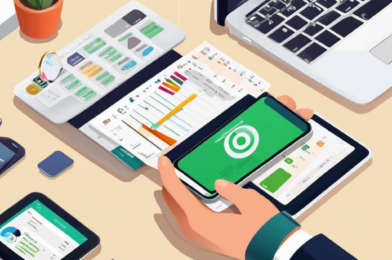Living a debt-free life may seem like a far-fetched dream for many, but it is achievable with discipline and the right strategies. Here are some tips to help you wipe out your debt and start enjoying financial freedom.
Creating a budget is the first step toward taking control of your finances and eliminating debt. Start by tracking your monthly expenses to understand your spending habits. Separate necessities, such as rent and utilities, from discretionary spending, like entertainment and dining out. This awareness will help you identify areas where you can cut back. Allocate your income accordingly, ensuring that your necessities are covered, and set limits for discretionary spending. Consistently review your budget to identify areas where you can further reduce expenses and channel more funds towards debt repayment.
Once you’ve established a budget, it’s time to tackle the debt itself. There are two primary strategies for this: the snowball method and the avalanche method. The snowball method involves paying off debts from the smallest to the largest, regardless of interest rates. This approach provides quick wins and a sense of accomplishment that can motivate you to keep going. On the other hand, the avalanche method targets debts with the highest interest rates first, which can save you money over time. This method is more cost-effective, but it may take longer to see progress, potentially impacting your motivation. Choose the strategy that suits your personality and keeps you driven to reach your goal of debt-free living.
Negotiating with your creditors may seem daunting, but it can be an effective way to reduce your debt burden. Reach out to your credit card companies and ask for a lower interest rate, especially if you have a good track record of on-time payments. You can also request to have certain fees waived or for them to accept a settlement, which is a lump-sum payment that’s less than the total amount owed. If you’re facing challenges managing multiple debts, consider a debt consolidation loan, which rolls your debts into one payment at a lower interest rate. This simplifies your repayment process and can reduce the overall cost of your debt.
Staying focused and motivated is crucial to achieving debt-free living. Visual reminders, such as a debt-free vision board, can help keep your goal at the forefront of your mind. Share your journey with a trusted friend or consider joining a support group to stay accountable and gain encouragement. Celebrating small wins along the way is also essential for maintaining momentum. For example, treat yourself to a movie night or a special meal for reaching milestones like paying off a credit card or reducing your total debt by a certain percentage.
Living debt-free is a liberating goal, and with dedication and smart strategies, it’s within reach. Start by creating a budget and choosing a debt repayment method that works for you. Negotiate with creditors to reduce interest rates or settle debts, and consider debt consolidation if it makes sense for your situation. Stay focused and motivated by using visual reminders, seeking support, and celebrating your small wins. Remember, the journey to debt freedom is a marathon, not a sprint, so be patient and persistent. The sense of financial empowerment that comes with achieving this goal will make every step worthwhile.
The key to successful debt-free living is adopting a mindset of financial responsibility and proactive money management. It’s about more than just getting out of debt; it’s about staying debt-free for the long term. This means making conscious choices in your daily life and adopting habits that promote financial health. For example, instead of impulse purchases, practice thoughtful consideration and delay gratification by waiting a set amount of time before buying non-essential items. Learn to distinguish between needs and wants, and prioritize spending on things that align with your values and long-term goals. Continuously educate yourself about personal finance, investing, and budgeting to make informed decisions and adapt your strategies as your life circumstances change.
Lastly, remember that debt-free living isn’t just about the numbers; it’s about the sense of empowerment and security that comes with financial freedom. It’s about having options and being able to make choices without the weight of debt holding you back. Imagine the relief of knowing you’re in control of your financial future and that you have the resources to pursue your passions and support the causes that matter to you. This mindset shift can be a powerful motivator to stay on track and make the most of your hard-earned money. Financial freedom is a journey that requires discipline and perseverance, but the rewards of debt-free living make every step of the way worth it.






